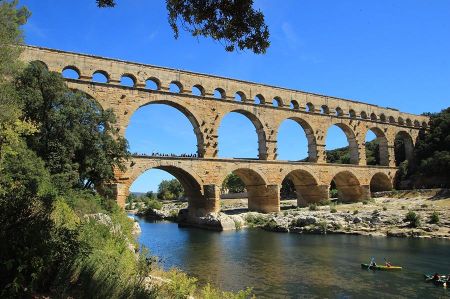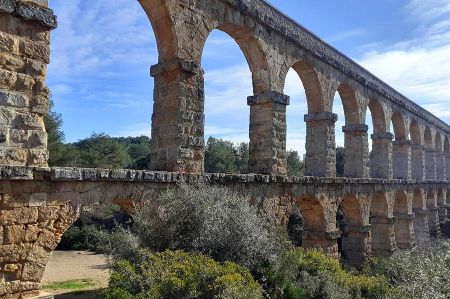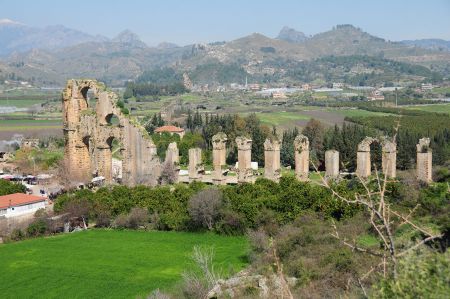Water supply in the Roman Empire
- Written by Portal Editor
The quality of execution in the Roman Empire is absolutely comparable to the technology of road construction and in some cases very cleverly combined with road construction is the construction of the water supply systems in the cities of the empire.
The Romans knew very well how to distinguish the problems in planning the water supply and disposal of an already existing city from those of a new city that was to be founded. Every time a new company was founded, the supply of fresh water and the disposal of wastewater were first considered before the final location of a city was decided. Planned urban development was standard for centuries and then was almost completely forgotten again for more than 1,000 years. If we look around a little, even today, despite the most modern technology, we are often not able to sensibly coordinate planning and execution. There are enough examples.
Bridging large height differences in the terrain

The Pont du Gard is just one of many well-preserved Roman water supply buildings. Let's take the aqueduct near Segovia in central Spain, which was built under Emperor Trajan between 98 and 117 AD and is still considered a masterpiece of Roman engineering and brought water to Segovia from 15 kilometres away. Interested visitors should also take a close look at the aqueduct in Aspendos / Turkey.
How could the Romans, without modern technology, build pressurized water pipes that could bridge large differences in height in the terrain, so that a constant flow of water was still guaranteed. But let's start at the source.

Vitruvius describes finding sources in his book “de architectura”: “Before sunrise, lie with your face on the ground and prop your chin up and look at the surroundings […] if you see moist vapors curling up and rising in the air, you should you dig there.”
The source of supply is approximately 27 kilometers away
Initially guided in channels carved into the rock, the water's path leads through tunnels and over viaducts, with only a 35-meter difference in height available to maintain the water flow over a length of 27 kilometres. A structural engineering masterpiece without satellite navigation over mountains and partial cuts.
In Perge near Antalya there is a special feature because here the water pipe was elevated in the median area of the road through the city. Large parts of it are still preserved and waiting for you.
A slight gradient had to be built in at all times, which the planner and architect Vitruvius usually describes as 0.5%, but at the Pont du Gard it was only 0.035%, which corresponds to a gradient of 35 centimetres per 1 kilometre. These different types of pipe systems were usually based on so-called gravity pipes, which were only covered to protect against pollution or excessive evaporation in summer or to protect against freezing over in winter. This meant that the water remained pleasantly cool even in summer.
Bridges were built to overcome valleys
Depending on the amount of water to be absorbed, the canals were between 50 centimetres and 2 meters wide and were often covered on the inside with waterproof plaster (opus signinum).
The usual clay pipes were not able to handle the water pressure alone, so massive pipes made of rock were used for these pressure pipes, which still fit together precisely via cone seals and thus minimized the loss.
Pressure pipes made of clay or lead
In cities, the pipe systems were usually designed as pressure pipes made of clay or lead. If the distance to the castellum became too great, a new castellum was inserted between them. The lead pipes were manufactured almost industrially; lead plates were cast and bent into pipes. The seam was then soldered so that the pipes often had a pear-shaped cross-section rather than being round.
In cities with a large water requirement, additional cisterns were usually set up to temporarily store the water. The Fildami Cistern near Istanbul is very well known and was able to temporarily store around 100,000 cubic meters of water. Also known in Istanbul is the cistern known as the “Sunken Palace”, which has a supporting structure made from the remains of Corinthian columns and is worth seeing for that reason alone.
Please read as well:
